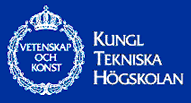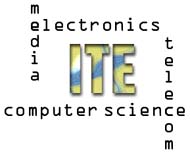Digital Video Network
(GiDVN)

Collaborators:
Björn Pehrson, Daniel Forsgren Royal Institute of Technology, Sweden
www.kth.se
With Kazunori Konishi, APAN-JP, Japan, Shuichi Matsumoto, Masahiro Wada, Shigeyuki Sakazawa, Takisima-san, and Yamasita-san
Demonstration: Multilayers Multicast
KDD research and Development Labs has created a demonstration client (a Win32 application) with a simple GUI (video display area and options menues) that allow end users to select among a range of reception modes. They can chose to receive/decode, as well as start and stop and change different sets of video layers. Click here for Japan information.
Daniel Forsgren, with Björn Pehrson, is developing an improved version of the client, which has the same basic client system requirements as the original, although it also requires that Java 2 (jdk 1.2.2). In the improved client, an external Java client application controls the video decoding/receiving/viewing application in all respects through a localhost TCP socket on the client machine (it also starts and configures the viewer application when the user starts to watch a stream). On the server side, an administrator java application continually distributes information about all the currently transmitted streams (channel names, content description, parameters) using two pre-determined multicast addresses to each client. Thus, a maximum of 10 MC groups may be joined by a client in this case (all layers + the two data groups). Each java client joins the two data groups permanently when started.
Using the information transmitted by the server to those groups, each java client application also keeps an updated list of all video streams currently being transmitted from the server host, as well as information about the content in each stream and the parameters required to receive each stream. Thus, no parameter configuration files are required in this case. The client application also keeps track of network conditions (packet loss) and orders the viewer application to change reception mode automatically based on this information, in order to cope with congestion and related conditions. The user, if desired, can also accomplish these changes manually.
Kungl Tekniska Högskolan (KTH) is an international institution with established research and educational exchanges all over the world, especially in Europe, the USA, Australia and Southeast Asia., KTH, provides one-third of Sweden's capacity for engineering studies and technical research at post-secondary level. KTH conducts top-notch education and research of a broad spectrum – from natural science to all branches of technology, including architecture, industrial economics, urban planning, work science and environmental technology. KTH was founded in 1827 and is the largest of Sweden's six universitites of technology. At Electrum in Kista, the main Swedish resource centre of information technology, KTH co-operates with Stockholm University, other research centres, and with industry.
Networks:
NORDUnet interconnects the Nordic national networks for research and education and connects these networks to the rest of the world. NORDUnet offers network services that are based on the Internet Protocol only. NORDUnet provides its services by a combination of leased lines and Internet services provided by other international operators. Primary R&D network interconnects are accomplished at the STAR TAP. (www.nordu.net)
Asia Pacific Advanced Network (APAN) in an advanced network linking Asia Pacific communities and the STAR TAP. The Asia-Pacific Advanced Network Consortium (APAN) was established on 3 June 1997 as a non-profit international consortium established. APAN is intended to be a high-performance network for research and development on advanced applications and services. APAN provides advanced networking environment for research community, and promotes international collaboration. (www.apan.net)

Global internet Digital Video Network